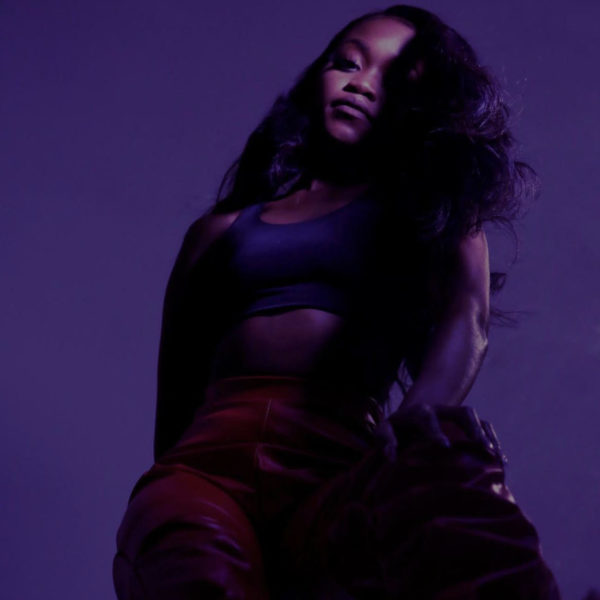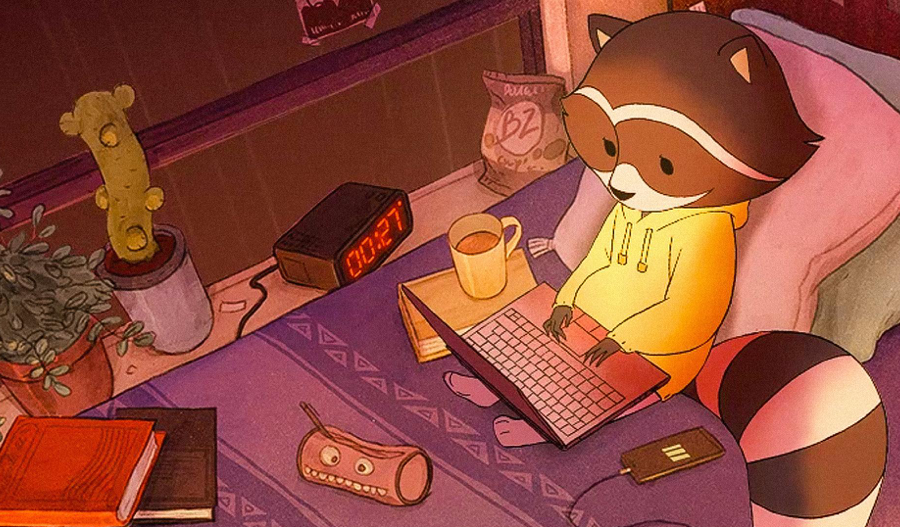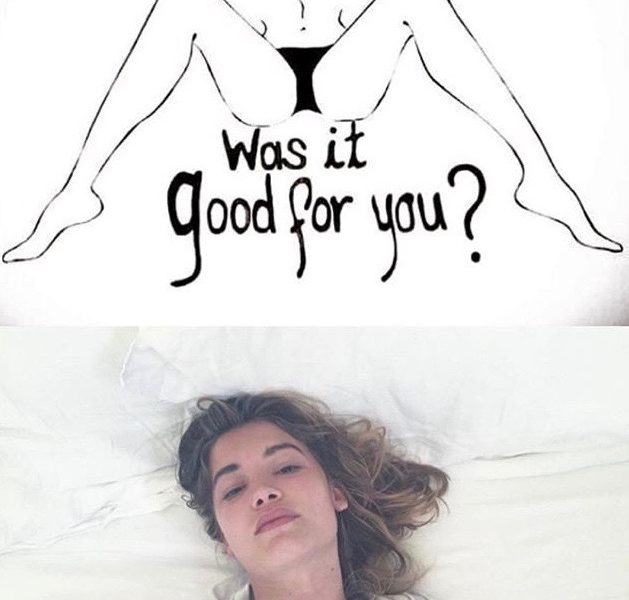For the majority of the 2000s and the decades before them, awards shows have been a cultural concept distinctly owned by the feminine. The prestige of the Academies, the swelling of romantic music after every award, and of course, the unparalleled glitz and glamour of the evening’s most decadent stars. Remember the running joke of the Oscars being the “female Superbowl.” Imagine groups of housewives prepping parties and organising bets on who would be wearing Chanel while their husbands stand stiffly in the kitchen over beers. Joan Rivers in gold, poking at the ribs of underaged starlets as camera click and waves of taffeta turned to fodder for tabloids…

Awards Shows are for the Boys
A timeline of how macho expressions of success have ruined the Oscars
For the majority of the 2000s and the decades before them, awards shows have been a cultural concept distinctly owned by the feminine. The prestige of the Academies, the swelling of romantic music after every award, and of course, the unparalleled glitz and glamour of the evening’s most decadent stars. Remember the running joke of the Oscars being the “female Superbowl.” Imagine groups of housewives prepping parties and organising bets on who would be wearing Chanel while their husbands stand stiffly in the kitchen over beers. Joan Rivers in gold, poking at the ribs of underaged starlets as camera click and waves of taffeta turned to fodder for tabloids.
Everything to do with creative arts award shows has always been seen as femme, including the mediums themselves. Art and media, despite historically being most financially forgiving to men, have been viewed as effeminate. To go into theatre or music or dance is a choice that precipitates worries about young boys being bullied, ostracized, or ‘turning’ gay… despite the arts boasting strong communities, strict discipline, and vibrant, inclusive diversity. Those who watch award shows are presumed to be interested in the topic at hand as well as the camp of the procession itself. Sitting through three hours of red carpet looks does not necessarily conform to traditional masculine ideology, particularly due to the marketing of award shows specifically to feminine viewers through magazine covers and pre-shows on E!, Oxygen and the like. This combination of interest in creativity and enthusiasm for grandness were once a cocktail of stereotype that overwhelmed and segregated award show viewing in favour of feminine audiences.
But in the past 10 years, we have seen an abrupt shift in how all award shows, but specifically the Oscars, have abandoned the tropes of femininity in exchange for a colder, more stereotypically masculine appreciation for the craft of film. This change in tone has not only changed the feelings around watching the Oscars, but it in many ways has fundamentally altered how we as a society discuss and consume film in general.
To begin a bit past the beginning, we must travel to 2009. A time of frenzied hope and horrible fashion in which film was beginning to reap the violence of the most topical issue of the early 2000s, the wars in Iraq and Afghanistan. The Hurt Locker, directed by Kathryn Bigelow, swept the Oscars, trouncing media about environmentalism (Avatar), the struggles of women (The Blind Side and Precious), and even a Quenten Tarantino hard-hitter comedy in Inglorious Bastards. Bigelow’s win was groundbreaking: the first woman to be honoured as Best Director and Best Picture winner all in one evening. But despite her incredible work, The Hurt Locker stood for something new in the canon of war films. A highly structural, heavily directed marvel of a film, the story of men in Iraq and their mental deterioration through their tour was an unprecedented tale at the time… the fact that it was directed by a woman was unfathomable. But for all the good it did to bring Bigelow her well deserved laurels, The Hurt Locker stood for something new in the canon of war films. It frankly discussed ‘war-addiction’ and irrational violence- but the cinematography and time of its release made the men enacting violence look like superheroes. Unlike films that glorify war, like Top Gun or American Sniper, or films that stand in stark opposition to violence like The Deer Hunter or Full Metal Jacket, The Hurt Locker, intentionally or unintentionally, created a threshold of allowance to violence as long as the perpetrators aesthetic was correct. It hurtled to top 10 lists across the world and developed a cult following of men who now could recognize and define their own internal violence as Best Picture worthy.
The Hurt Locker would join the ranks of films that have been recently described as “man movies,” films that have been removed from their original context and dissected for characters who are glorified as examples of ideal masculinity. Think Travis Bickle in Taxi Driver, anyone in Reservoir Dogs, and most recently, Joaqin Phoenix’s Joker. Despite all these films serving as firm critiques of masculine tropes, online boards such as Reddit have incorrectly recontextualized these characters under modern definitions of hyper-masculinity. Men have always been able to see themselves in cinema, and there are glowing examples throughout the medium’s history of male characters being kind, empathetic, and loving. But these examples of men behaving decently cannot withstand the online proliferation of incel culture and toxic masculinity that has demanded the inclusion, preservation, and glorification of films directed by men, for men. The straw that broke the camels back was however not another woman winning best picture, nor the exclusion of another war film.
It was Ghostbusters. The flop of all flops. Desperate to appear inclusive in the shadow of a male dominated history, Hollywood decided to create a new, engaging comedy by and for women… just kidding, they threw together a half-hearted reboot of an untouchable classic. Ghostbusters, for decades an example of a genderless good time, became the lightning rod for men at the movies. Petitions to ban the film from theatres filled the internet, the IMBD page was at one star before previews, and men everywhere took to their soapboxes to denounce the atrocity that was this film. To be clear, Ghostbusters is awful not because of the women in it, but, because it was branded explicitly as a girl-boss retelling; it became the chew toy for rabid misogynists everywhere. Even more impactfully, it has changed the relationship that men have to what is perceived to be ‘good media’… especially media that could be ‘Oscar worthy.’
When Ghostbusters destroyed the box office, men suddenly had proof that female-led films can fail. This, stacked against decades of war films and Scorcese still shots was solid evidence that ‘high art’ was now masculine, while the feminine reboots were simply commercial drivel- Hollywood selling out to the ‘feminist left’. The old issue of film not being masculine enough evaporated, suddenly men were in deep discussions about male directors creating beautiful art, discussing the ability of male cinematographers in romantic terms. The cut-and-slash, loud for the sake of being loud media that would have been traditionally viewed as masculine now belonged to the feminist fans of Kate McKinnon. Men had the high ground.
This cultural high ground has been maintained as society has generally come to cringe at the announcement of an all-female cast. With the exception of Birds of Prey (class film), there is little energy put into creating viable stories for women, the premise implodes, and the film bros have another example of masculine movies trumping feminine ones. For every Oceans 8, there is a Dunkirk; with every The Hustle comes a Vice; and men continue to dominate all Oscar categories handily, regardless of what story they tell. It doesn’t matter that men are also directing period pieces and delicate stories about fashion and love; because of the flaws in blockbuster female films, even these beautiful stories are being upheld by sexist viewers purely because they were told by men.
This exchange of femininity for masculinity, of course, changes nothing in the media landscape. Men are still being recognized more than women, are still funded more than women, and will continue to succeed over women in multiple categories, as it has always been. Viewership of awards shows will continue to drop as an exhausted populace loses even the most entertaining facets of the ceremonies as the Academy scrambles to entertain both Reddit and the Huffington Post. Women who win categories deservedly will continue to be written off as politically correct pawns, and the Academy will continue to weakly signal virtue even as it upholds archaic and misogynistic barriers to equal artistic access. The work of women of colour will continue to be written off as attempts by the Academy to reignite affirmative action, devaluing the incredible work they have put into their craft in an industry that constantly devalues them. The rejection of feminine creation is linked to that which devalues the work of Black and minority ethnic populations. White men will continue to uphold classic, white-led films as standards of goodness while chalking up new, inventive, diverse stories as political correctness gone mad. Minority groups will continue to work twice as hard for half as much, both in terms of initial support from the film industry and cumulative recognition by adjudicating organisations.
As definitions of quality move more internationally and ethics are raised about the glorification of the industry, how long will the gloss on awards shows last? Will we be able to remove toxic binaries from stories and narratives? Will we one day be able to appreciate old stories and create vibrant new ones? Or will the corrosive nature of viewing and appraisal eat away at this cultural institution until nothing is left? Let’s just hope the red carpet is still intact.
Julia Hegele (she/her), Arts and Culture Editor
Header image by Peggy Mitchell, one of our wonderful graphic designers!





Leave a Comment